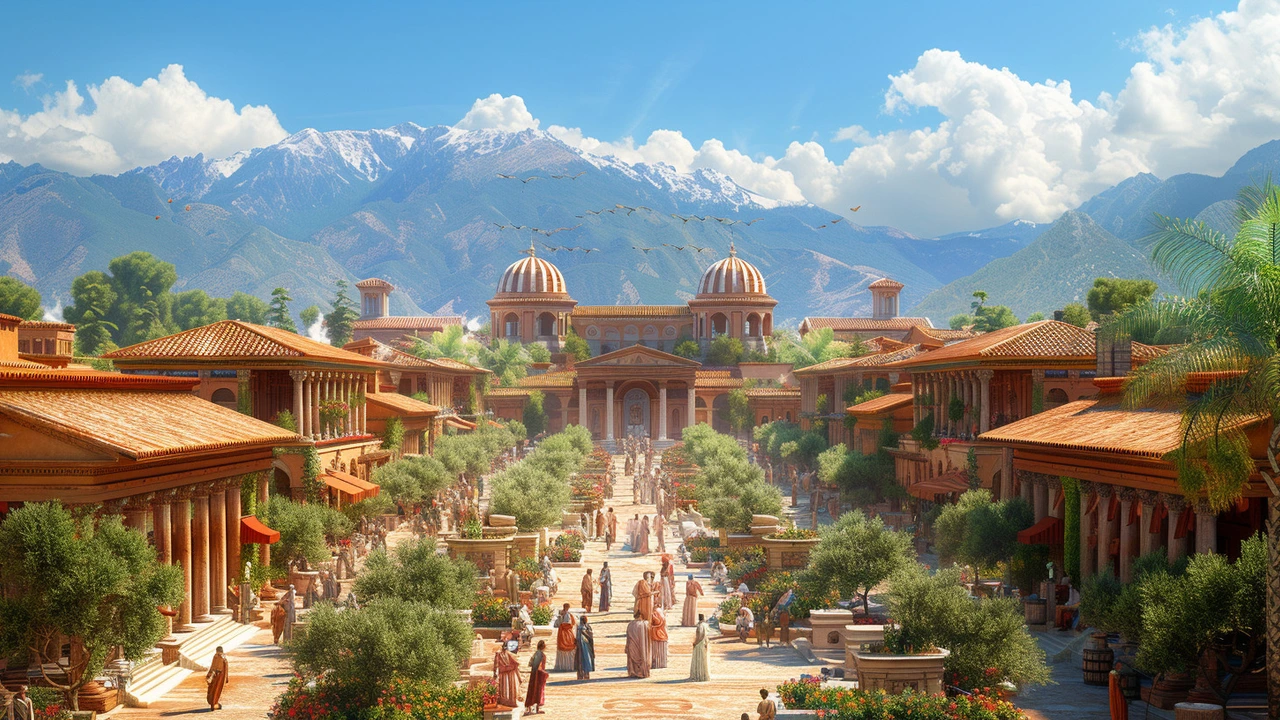The Revival of Classical Ideas in Renaissance Architecture
 Aug, 2 2023
Aug, 2 2023
Rediscovery and the Renaissance: A Classical Rebirth
Now, before I delve into this fascinating topic, a funny story comes to mind. My youngest, Rowan, has been attending virtual art history classes amidst the pandemic. One day, she approached me, her eyes wide with newfound knowledge and said, "Dad, did you know that ancient ideas never died? They just went to sleep and then Renaissance architects woke them up!" I laughed at her depiction but realized it accurately echoes the essence of what I am about to narrate.
Renaissance architecture, in essence, was a 'wakening up' of the dormant classical ideas. With its roots in early 14th-century Italy, the Renaissance movement was nothing short of revival—a revival of not just art and culture, but the very fundamental principles that governed architecture.
The wave of revival saw the marshalling of Roman and Greek concepts and their systematic implementation in creating structural masterpieces. New forms, techniques, and materials were adopted to emulate the authentic historic styles. Imagine the love and labor of a sculptor, pouring over marbled vestiges of the past, chiselling away to reveal the grandeur anew. The architects of the Renaissance period were that sculptor, and our modern cities, their marble block!
Fanfare for the Common Column
The Greeks had a certain fondness for their columns—they had three types, namely Doric, Ionic, and Corinthian. Come Renaissance, and we see a resurgence of these columns in architectural designs, except now they are not just limited to temples. From imposing entrances of grand establishments to decorative elements in houses, columns became an integral part of design.
In a funny parallel, I remember my son, Drake, playing with his new Lego set. He meticulously assembled bricks to form pillars, explaining to me that they 'hold up' his make-believe fort. The columns in Renaissance architecture played similar roles – they became the Lego bricks holding up the edifices of that era.
But, remember, these columns weren’t just bricks. In rather poetic terms, they were storytellers, narrating tales of the past, of civilizations long gone, and ideologies that stood the test of time. Their visual appeal paired with their functional role in the construction process marked the beginning of aesthetics coming to the forefront alongside utilitarian necessities.
The Arch, the Vault, the Dome: It's All About the Curve!
Remember geometry classes back in school? There was something quite intriguing about studying shapes and especially curves. Something perhaps the architects of the Renaissance felt as well.
The arch appeared as a recurring motif in the designs of the era, connecting spaces, forming enthralling facades, and adding an element of grandeur to structural designs. Who would have thought that a simple curve, a mere arc, could bring about such a transformation in architectural aesthetics?
On a broader scale, remastered applications of ancient engineering techniques gave rise to the captivating vaulted ceilings that became emblematic of the Renaissance period. Be it the barrel vault, the groin vault, or the iconic ribbed vaulting featuring in multitude of churches, the ceiling wasn't merely 'up there' anymore—it was an array of geometrically perfect, visually stunning structures, transforming spaces into a visual symphony.
Now, let’s turn our gaze upwards, to another magnificent innovation - the domes. They are, in simple terms, a symbol of man’s quest to mimic the celestial. The harmonious curves and splendid designs speak volumes of the mathematical prowess and sheer architectural genius of the builders of the Renaissance.
The Harmony of Proportions and Perspective
It seems almost a foregone conclusion today that a structure has to be proportionate to look appealing. This idea was one of the fundamental ones given rebirth during the Renaissance period. The idea of proportionality can be traced back to ancient Greece, and to Pythagoras, in particular.
The Renaissance architects embraced this Pythagorean understanding of nature’s harmonies and set out to reflect it in their designs. Buildings were not merely composed of brick and mortar. They were carefully planned and crafted to follow a proportional plan, making them pleasing to the eye and symmetrical. Every aspect of a building was proportionate to the other, lending it a sense of harmony and balance.
The concept of linear perspective, born out of the intellects of brilliant artists and architects, became a tool in the hands of the Renaissance builders. They used perspective to increase depth and bring a 3D effect into their designs. That's why walking through ancient structures, you can't help but marvel at the detailed vastness almost pulling you into its enchanting reality.
Art Literally Written in Stone: Sculptures and Friezes
No discussion about Renaissance architecture would be complete without mentioning the beautiful sculptures that adorned the buildings of the era. Remember, these sculptures weren’t just meant to please the eye; they served the greater purpose of storytelling.
From symbolic depictions of biblical scenes to vivid renditions of mythological tales, each sculpture was crafted with meticulous attention to detail and infused with meaning. The reliefs and friezes, with their complex, intertwined motifs, are testimony to an art form that transcends cultural boundaries and centuries.
As I pen down this narrative of revival, it's almost as if an echo from the halls, arches, domes, and walls of these architectural landmarks tugs at us. They speak voluminously of our human capacity to look back before moving forward, to learn, revive and rediscover. Like a phoenix, the classic ideals rose from their ashes, soaring high into the skies of the Renaissance, forever engraving their legacy in stone.